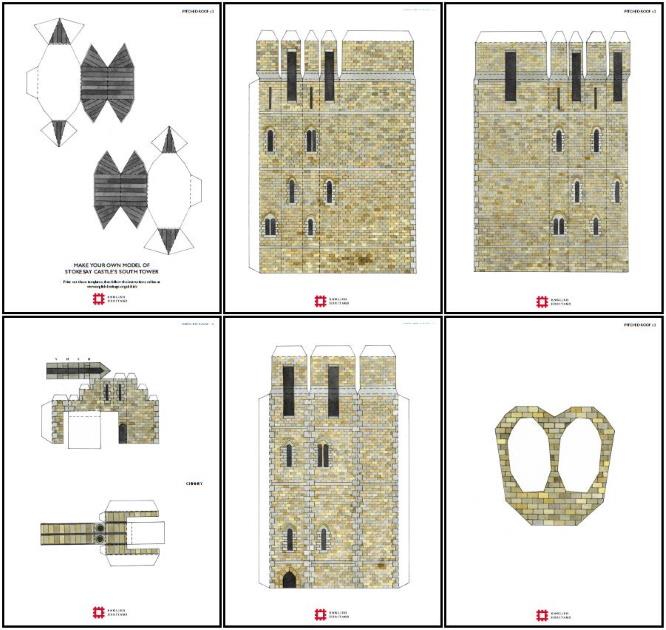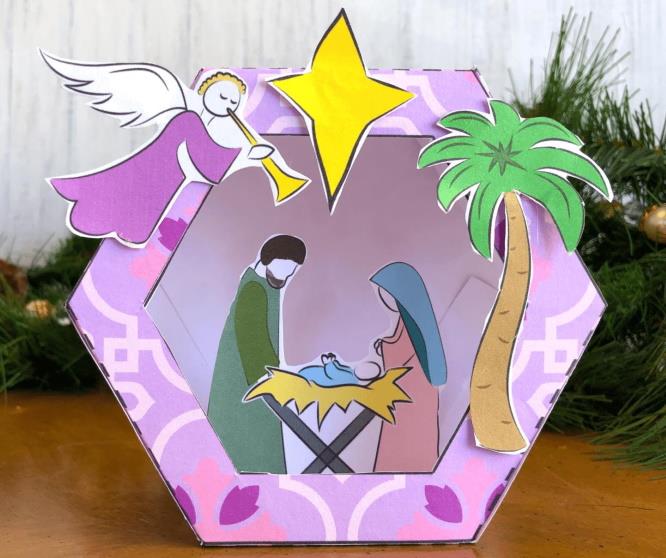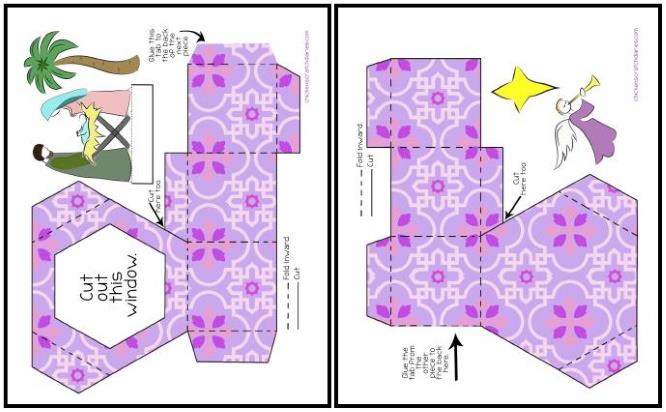Barbara Markova, from the website Markova Design, kindly shares with us this beautiful and rare papercraft of a Czech Nativity scene originally printed in 1923, look, a hundred years ago!
Regarding this nativity scene, Brabara said:
"Many of you admired my Czech paper nativity scene, wondering where I got it from. Since there was a lot of interest, I thought I would write a post about it. Here's a little of the family history behind this nativity scene.
My parents have the same nativity scene, which they displayed every year at Christmas time. So beautifully illustrated {drawn in 1923}, this version of the nativity scene has been part of our Christmas since I was little and I was thrilled when my father bought it for my sister and me on one of his trips to Prague.
It came on a large sheet of cardboard from which you carefully cut out each figure. The nativity scene was designed to be displayed with each figure glued to a platform, but I decided to glue a bamboo skewer to each character's back and then stick the skewer into green velvet-covered foam.
The figures in the nativity scene are all representatives of typical Czech villagers wearing traditional Czech costumes, each bringing a gift to the baby Jesus, according to their profession, for example, a musician plays the violin, a baker brings bread, and no We can forget the owner of the neighborhood bar who brings a liter of beer (Czechs like their beer).
As a child I loved looking at the scene and making up stories in my head about each character. I love how each piece is beautifully illustrated, with so much detail.
What I am pleased to share with each of you now is that after a quick search on the internet you can download and create your own nativity scene! All you need is a really good card and a great color printer."
Barbara Markova, do site Markova Design, gentilmente compartilha conosco este belo e raro papercraft de um Presépio Tcheco originalmente impresso em 1923, vejam vocês, há cem anos atrás!
À respeito desse presépio, Brabara disse:
"Muitos de vocês admiraram meu presépio tcheco de papel, perguntando-se de onde eu o tirei. Como havia um grande interesse, pensei em escrever um post sobre isso. Aqui está um pouco da história de família por trás desse presépio.
Meus pais têm o mesmo presépio, que exibiam todos os anos na época do Natal. Tão lindamente ilustrada {desenhada em 1923}, esta versão do presépio faz parte de nosso Natal desde que eu era pequena e fiquei emocionada quando meu pai a comprou para mim e minha irmã em uma de suas viagens a Praga.
Ele veio em uma grande folha de cartolina na qual você recorta cuidadosamente cada figura. O presépio foi projetado para ser exibido com cada figura colada em uma plataforma, mas decidi colar um espeto de bambu nas costas de cada personagem e depois enfiar o espeto em uma espuma coberta de veludo verde.
As figuras do presépio são todas representantes de aldeões típicos de uma aldeia tcheca usando trajes tradicionais tchecos, cada um trazendo um presente para o menino Jesus, de acordo com sua sprofissões, por exemplo, um músico toca violino, um padeiro traz pão, e não podemos esquecer o dono do bar do bairro que traz um litro de cerveja (os tchecos gostam de cerveja).
Quando criança eu adorava olhar a cena e inventar histórias em minha cabeça sobre cada personagem. Adoro como cada peça é lindamente ilustrada, com tantos detalhes.
O que tenho o prazer de compartilhar com cada um de vocês agora é que, depois de uma rápida pesquisa na internet vocês podem baixar e criar seu próprio presépio! Tudo que você precisa é de papel cartão de boa qualidade e de uma boa impressora colorida."
























